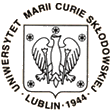

 |
 |
 |
|
Jerzy Jastrzebski
SLCJ, Warsaw Neutron Density Distribution Deduced from Antiprotonic AtomsLarge differences between neutron and proton radii are expected to characterize the nuclei at the border-of-stability line, an important future domain of nuclear structure studies. Therefore the information on these quantities for stable nuclei is a convenient starting point for studies of more exotic nuclei. However, whereas the peripheral proton distributions are well known for stable nuclei from electromagnetically interacting probes, the situation is much more unclear for neutron distributions, where 20-40% errors of the mean square radii are a rule rather than an exception. Therefore, all new experimental information on these distributions is of a great interest. In this presentation a ten-years effort of the Warsaw-Munich collaboration aiming at the determination of the extent and composition of the nuclear periphery using antiprotons from the LEAR facility at CERN will be summarized. The differences Delta r_np between the root mean square radii of neutron and proton distributions were determined for 26 nuclei spanning the mass range from 40 to 238. Two experimental methods were applied: analysis of the antiproton annihilation residues one mass unit lighter than the target mass by nuclear spectroscopy and the measurement of strong interaction effects on antiprotonic X-rays. The conclusion is that, under the assumption of two-parameter Fermi neutron and proton distributions, only the neutron diffuseness is increasing in neutron rich nuclei and not their half-density radius. The differences between neutron and proton rms radii calculated under these premise are in agreement within the errors with measurements employing other methods. A linear relationship between Delta r_np and the asymmetry parameter delta = (N Z)/A was established as shown in the Figure (Delta r_np = 0:035 + 0:897 delta). The experimentally determined Delta r_np value of 208 Pb is in excellent agreement with the expectation of the neutron equation of state. *** download abstract in ps file ***
| ||
Last modificated: 2003-09-22

